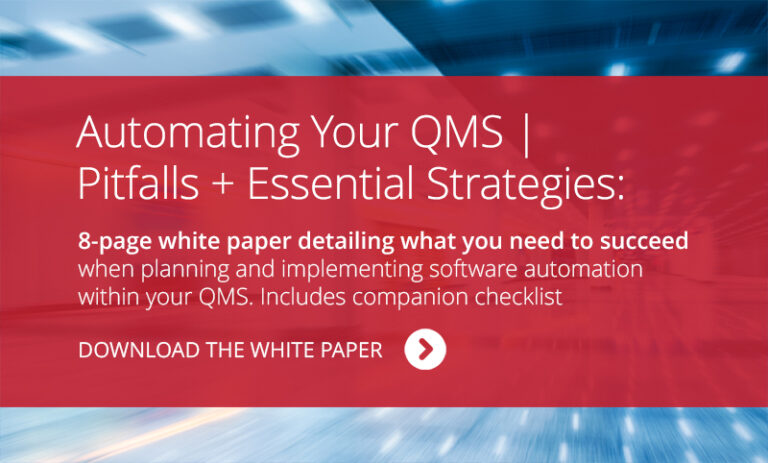March 6, 2017
International QMS compliance inspections of pharmaceutical and medical device manufacturers by the FDA and MHRA are on the rise.
FDA & MHRA Increase Inspections
Both the Food and Drug Administration (FDA) and the Medicines and Healthcare Products Regulatory Agency (MHRA), which regulates medicines, medical devices and blood components for transfusion in the United Kingdom, are increasing foreign life science manufacturer inspections in regard to quality management system (QMS) compliance.
Fiscal Year 2016 Inspection Results
In fiscal year 2016 FDA inspected 78 overseas facilities, up from 69 the prior year. The MHRA conducted nearly the same number of assessments in 2015, inspecting 79 foreign facilities – up from the 42 inspections reported in the agency’s last review of GMP deficiencies, according to a recent report.
US Congress Requested Increase
The rise in FDA inspections could be at least partially explained by demands made by the House of Representatives. Lawmakers asked the FDA to more closely monitor and assess its record of inspection at foreign facilities in 2015. Congress wants to ensure FDA gave the appropriate amount of attention outside American borders. Earlier, the House Energy and Commerce Committee expressed concerns about the FDA unfairly targeted U.S. facilities and requested that the GAO also review the FDA’s procedures for developing and implementing risk-based inspections. FDA also responded accordingly and it has ramifications for pharmaceutical and medical device manufacturers both domestic and international.
QMS Compliance: FDA vs. MHRA Focus
As noted in earlier blogs, FDA focuses like a laser beam on correct and preventive action (CAPA) plans and quality management system (QMS) compliance issues. According to MHRA’s report its focus is slightly if not significantly different. The top four citations are:
- Quality systems defined as critical (27), major (293), and overall (also including relatively minor issues) 555.
- Complaints and Recalls defined as critical (10), major (25), and overall (372).
- Documentation defined as critical (9), major (138), and overall (372).
- Quality Control defined as critical (4), major (26), and overall (136).
Weak Document Management Cited In Warning Letter to British Pharmaceutical Manufacturer
A recent FDA warning letter to a British pharmaceutical manufacturer is a good example of what the agency ofter prioritizes during a QMS compliance inspection. In this case, Porton Biopharma was served a FDA warning letter that alleged its drugs did not conform to cGMP and were therefore adulterated in the eyes of the FDA. Superficially, FDA cited the firm for:
- Failing to thoroughly investigate any unexplained discrepancy or failure of a batch or any of its components to meet any of its specifications, whether or not the batch has already been distributed.
- Failing to establish and follow appropriate written procedures, designed to prevent microbiological contamination in drug products purporting to be sterile.
- Failing to establish and follow change controls to evaluate all changes that could affect the production and control of intermediates or API.
CDRH Sends Warning Letter To Korean Medical Device Manufacturer
The FDA’s Office of Compliance Center for Devices and Radiological Health (CDRH) sent a warning letter to Neo Vision Co., Ltd. in Korea for alleged problems with its medical device daily wear soft contact lenses. Again, its focus is worth nothing. FDA’s letter spelled out several problems it found at the facility, including:
- Failure to establish and maintain procedures to control the design of the device to ensure that specified design requirements are met. Per the FDA, the firm failed to conduct verification/validation for these devices. In addition, it did not establish a design history file (DHF) for its Neo Cosmo Soft Contacts Lenses.
- Failure to develop, conduct, control, and monitor production processes to ensure that a device conforms to its specifications.
- Failure to establish and maintain procedures to ensure that device history records (DHR) for each batch, lot, or unit are maintained to demonstrate that the device is manufactured in accordance with the device master record (DMR).
Prepare For More FDA Inspections
The FDA will certainly continue to increase overseas QMS compliance inspections. Obviously, any medical device or pharmaceutical manufacturer operating outside the United States is going to have to enhance its regulatory compliance efforts. That also means pharmaceutical and medical device manufacturers operating in the United States must keep a close eye on their international partners.
Proactive Measure: Supplier Quality Management Solution
If a drug or medical device recall occurs involving any overseas supplier, it won’t be long before the FDA is pressured to further ramp up inspections both within and outside the U.S. Investing in an automated quality management system with a strong supplier quality management software component like AssurX is clearly a proactive solution to managing foreign vendors.



